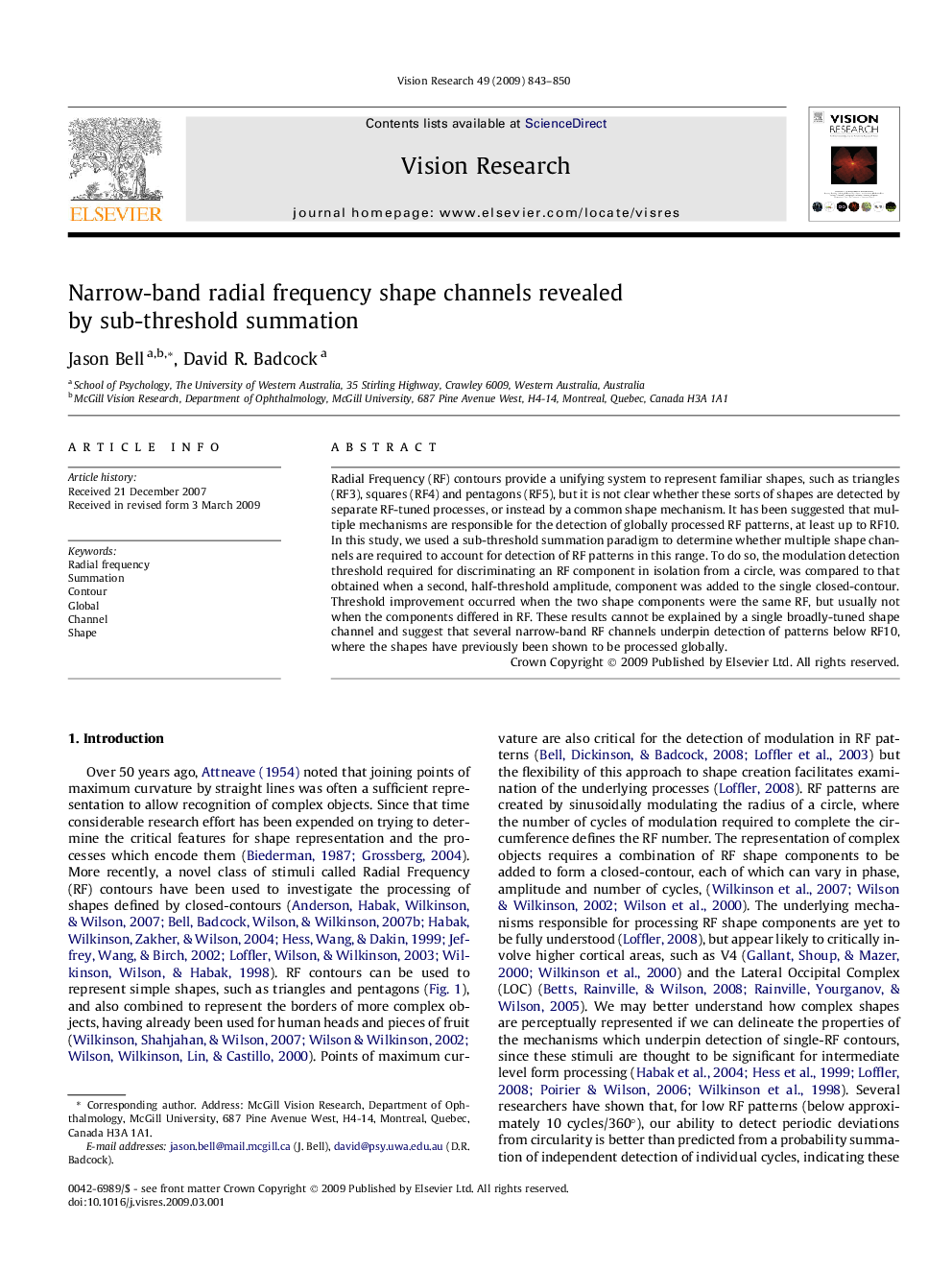| Article ID | Journal | Published Year | Pages | File Type |
|---|---|---|---|---|
| 4034796 | Vision Research | 2009 | 8 Pages |
Radial Frequency (RF) contours provide a unifying system to represent familiar shapes, such as triangles (RF3), squares (RF4) and pentagons (RF5), but it is not clear whether these sorts of shapes are detected by separate RF-tuned processes, or instead by a common shape mechanism. It has been suggested that multiple mechanisms are responsible for the detection of globally processed RF patterns, at least up to RF10. In this study, we used a sub-threshold summation paradigm to determine whether multiple shape channels are required to account for detection of RF patterns in this range. To do so, the modulation detection threshold required for discriminating an RF component in isolation from a circle, was compared to that obtained when a second, half-threshold amplitude, component was added to the single closed-contour. Threshold improvement occurred when the two shape components were the same RF, but usually not when the components differed in RF. These results cannot be explained by a single broadly-tuned shape channel and suggest that several narrow-band RF channels underpin detection of patterns below RF10, where the shapes have previously been shown to be processed globally.
